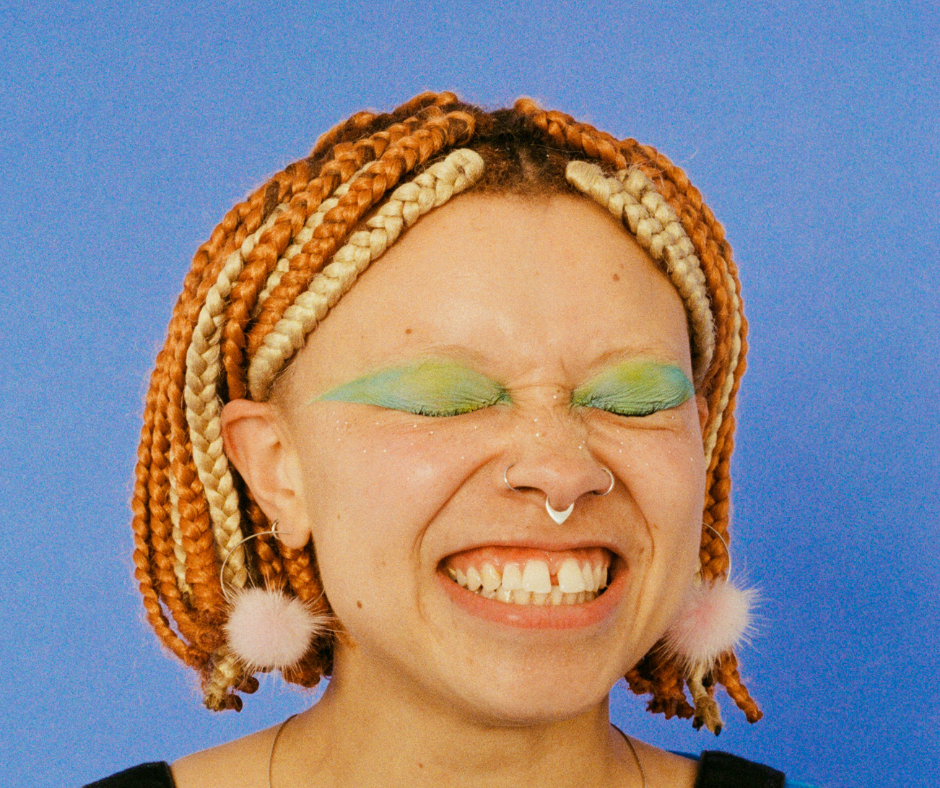Why Don’t I Recognize Myself Yet? Body Dysmorphia for Queer and Trans Folks

The Questions You Never Say Out Loud
Do you ever catch a glimpse of your reflection and freeze, wondering why your face doesn’t match the person you know you are inside?
Do you scroll past another transition video and feel a mix of hope and grief because your process isn’t going at the same speed?
Do you sometimes avoid photos, mirrors, or even Zoom because you can’t quite handle the gap between how you want to look and what you see?
If you’ve whispered any of these questions to yourself, you’re far from alone.
For queer and trans folks, especially those navigating HRT, surgeries, or early transition, body dysmorphia often becomes a quiet companion. Not because something is wrong with you, but because you are trying to build a body that feels like home while living in a world that misread you for so long.
This article is for you — the person who is doing the courageous work of aligning your outside with your inside. The person who wants to understand why certain days feel unbearable and why identity shifts can make body perception feel unstable. The person who wants to reclaim comfort, embodiment, and peace.
This is your space to breathe, reflect, and understand what your brain is trying to tell you.
Understanding Body Dysmorphia in Queer and Trans Journeys

Body dysmorphia is not vanity, insecurity, or pickiness. It is a neurological and psychological state where your brain becomes hyper-attuned to perceived flaws or mismatches. But when you’re queer or trans, the experience becomes more layered.
It’s not just “I don’t like this feature.”
It’s “This feature doesn’t match my identity.”
It’s “This is not me.”
It’s “My reflection contradicts my reality.”
For trans and gender-expansive folks, body dysmorphia often intersects with gender dysphoria — but they are not the same.
Dysphoria says:
“This doesn’t align with my gender.”
Dysmorphia says:
“This looks wrong, distorted, or unacceptable.”
Both can coexist. Both can overlap. Both can intensify during transition.
And both are impacted by:
- Hormonal shifts
- Social comparison
- Cultural beauty standards
- Misgendering
- Internalized transphobia
- Trauma histories
- Anxiety or dissociation
- Changes happening too slowly or too quickly
- Feeling “in between” selves
- Grief for the body you were forced to live in
- Hope for the body you want to build
Understanding the neurological roots makes everything feel less like a personal failure and more like what it really is — a response to mismatch, marginalization, and survival.
Why Dysmorphia Intensifies During Transition

Transition is not one moment. It is a long unfolding process that engages biology, identity, memory, and social experience.
1. HRT Literally Changes Your Brain’s Perception of Your Body
As hormones shift, your brain updates its “body map,” which is the internal blueprint of how you think you look. When physical changes lag behind your internal sense of self, your brain panics.
Example:
A trans man on testosterone may feel broader or more muscular even before changes show. So seeing narrow shoulders in the mirror sparks confusion or disgust.
A trans woman on estrogen may feel softer or more feminine internally but see features she associates with masculinity, triggering distress.
2. Waiting Creates Space for Hyper-fixation
When every tiny physical change feels like hope, your brain becomes overly focused on monitoring progress. This makes dysmorphia spike because you’re scanning constantly.
3. Social Comparison Becomes Intensified by Algorithms
If you watch one transition video, your feed becomes filled with them. But you rarely see the slow, messy, nonlinear journeys — only the hyper-idealized ones.
4. You're Navigating Identity, Safety, and Embodiment All at Once
Your nervous system is doing too many things simultaneously:
- Adjusting to a new identity
- Updating your body map
- Navigating social perception
- Managing dysphoria
- Trying to stay physically safe
- Processing past invalidation
That is a lot for any human to hold.
Now, Let’s Move Into the 15 Long, Therapist-Approved Practices
(All specifically designed for queer + trans folks navigating transition, HRT, surgeries, and dysmorphia.)
Every practice is a long mini-section with three example bullet points.

1. Practice Slow Embodiment After Hormonal Changes
Hormones can shift your sense of self faster than your reflection updates. Your brain may still be using the old “body map” even when changes are happening internally. Practicing slow embodiment helps your brain re-sync to your physical reality without shock or disappointment. Instead of scanning yourself for what changed, approach your body like you would a friend who is growing at their own pace. You do not need to love what you’re seeing today. You only need to let your nervous system catch up.
Examples:
- Sit with one part of your body at a time, like your hands or shoulders, and describe it without judgment.
- Let yourself feel new sensations from HRT rather than immediately analyzing appearance.
- Use grounding touch to remind your body, “I am allowed to exist exactly as I am today.”
2. Create a “Transition-Free Zone” in Your Daily Life
When every moment is filtered through transition — progress photos, hormone timelines, comparisons — your brain becomes overloaded. A transition-free zone allows you to step out of hyper-vigilance and into life beyond dysphoria. This is not ignoring your identity. It is letting yourself exist as a whole person rather than a project. It reinforces that you deserve joy that is not conditional on physical change.
Examples:
- Have a hobby space where transition talk, progress checking, or analysis is off-limits.
- Tell close friends you want some conversations that are not body-related.
- Spend time in nature where your body does not need to perform or present anything.

3. Use “Mirror Mapping” Instead of Mirror Critique
Mirror mapping is the practice of looking at your reflection without trying to correct, analyze, or interpret it. Instead, you observe the outline of your body with neutrality. This gives your nervous system a chance to feel safe in front of the mirror instead of panicked. Over time, your brain builds a more accurate and compassionate body map and reduces the shock response. This technique is especially helpful during early transition stages when features are shifting.
Examples:
- Look at your silhouette in soft lighting instead of harsh lighting.
- Spend one minute noticing shapes rather than details.
- Stand further back from the mirror so the image feels less overwhelming.
4. Practice Gentle Camera Exposure
Many trans folks avoid photos entirely because images feel like betrayal or proof of misalignment. But blocking yourself from visuals can widen the dysmorphia gap. Gentle, slow camera exposure allows your brain to get used to seeing you without panic. This does not mean you have to love your photos. It means tolerating them enough that you no longer spiral. Repeated exposure reduces shock and gives your brain new “data” that helps update your self-image.
Examples:
- Take low-pressure selfies with filters off, but don’t analyze them.
- Keep one photo per week, even if you don’t feel ready to like it.
- Notice how your face changes across different lighting instead of fixating on flaws.

5. Build Safety Routines Around Misgendering Recovery
Misgendering, even when accidental, can destabilize your body image immediately. It pulls you out of your identity and into a dysregulated state. Having a recovery routine helps you reclaim control after moments that leave you spinning. This routine is not about dismissing your feelings. It is about giving your brain a clear path back to safety so dysmorphia doesn’t take over.
Examples:
- Say affirming statements out loud, such as “I know who I am even when others don’t.”
- Ground your body with pressure on your thighs or chest.
- Text a friend from your “gender affirming support list.”
6. Create a “Future Self Folder” That Isn’t About Appearance
Many transition folders are filled with body goals, dream features, and comparisons. Those can be motivating but can also worsen dysmorphia. A future self folder that focuses on identity, energy, lifestyle, and expression helps widen your vision beyond physical changes. It helps your brain attach hope to identity, not just image. This reduces pressure and creates a more holistic transition journey.
Examples:
- Save quotes that resonate with your gender journey.
- Save photos of clothing styles you love.
- Save art, aesthetics, or vibes instead of specific body types.

7. Practice Sensory-Based Gender Affirmation
Instead of focusing only on appearance, use sensory experiences to affirm your gender. The brain processes identity through sensation as much as through sight. Sensory affirmations make your gender feel embodied. They help your nervous system experience alignment even before physical changes occur.
Examples:
- Use a scent, lotion, or texture that feels aligned with your identity.
- Wear clothing that feels correct to your skin, not just looks correct to others.
- Adjust your posture or walking pace to match your gender expression.
8. Develop a Compassionate Relationship With “Transition Backslides”
Some days you feel aligned and affirmed. Other days you feel like you’re starting all over again. These fluctuations are not failures. They are part of how the brain recalibrates identity. When dysmorphia spikes, it often means your brain is integrating new changes. Learning to approach these days with gentleness stops you from spiraling into shame.
Examples:
- Name what happened that triggered the dysmorphia instead of blaming yourself.
- Remind yourself that dysmorphia waves often precede periods of growth.
- Create a soft routine for dysphoria-heavy days like warm showers or dim lighting.

9. Use “Identity Anchors” During Dissociation
Dysmorphia often overlaps with dissociation. When your reflection feels wrong, your brain disconnects as a protective response. Identity anchors help you return to your body through cues that feel affirming. These reminders pull you out of the fog without forcing you to look at your reflection or confront your image before you’re ready.
Examples:
- Use a chosen name mantra quietly under your breath.
- Hold a piece of clothing or jewelry that represents your identity.
- Touch your chest or collarbone to physically anchor yourself.
10. Make Peace With “In-Between” Identity Stages
Transition has liminal periods where you don’t feel like your old self but don’t fully feel like your future self either. This middle space can worsen dysmorphia because you feel undefined. Instead of treating the in-between as a failure, treat it as a valid chapter. Your body is shifting, your brain is updating, and your identity is blooming. This phase deserves respect, not shame.
Examples:
- Name your current phase something meaningful like “early growth stage.”
- Wear clothing that helps you feel grounded even if you’re not fully aligned yet.
- Play with expression without needing it to be perfect.
-

11. Create a Gentle Ritual Around HRT or Medication
Many queer and trans people take hormones quickly or absentmindedly because they are excited or overwhelmed. But turning HRT into a grounding ritual can help your body and mind connect. Rituals tell your nervous system that change is happening in a safe, intentional way. This helps reduce dysmorphia because your brain starts associating bodily changes with care, not fear.
Examples:
- Take your hormones while speaking an affirmation like “I’m becoming more me.”
- Keep a quiet tracking journal noting sensations, not just appearance.
- Play a song that symbolizes your transition whenever you take your dose.
12. Practice Voice Neutrality Before Voice Training
Voice dysphoria is one of the most common causes of body dysmorphia for trans folks. But jumping straight into voice training can overwhelm the nervous system. Practicing voice neutrality teaches your brain to tolerate your current voice without panic before expanding it. You don’t have to love it. You only have to feel safe enough to hear yourself.
Examples:
- Record your voice once weekly without analyzing it.
- Sing softly in private to reconnect with sound for pleasure not performance.
- Speak affirmations in a tone that feels comfortable without forcing change.

13. Create a Plan for After Surgery Photos and Swelling
Post-op dysmorphia is extremely common. Swelling, bruising, healing phases, and asymmetry can trigger panic because the results don’t look like what you pictured. Preparing ahead helps you cope with the shock. It reminds your brain that healing takes time and that the early stages are not the final result.
Examples:
- Avoid mirrors for the first few days unless emotionally grounded.
- Pre-write affirmations like “Day 2 swelling is not the final result.”
- Have a support person check results first if you’re anxious.

14. Use Body-First Coping Instead of Thought-First Coping
When dysmorphia takes hold, thoughts can become hostile and distorted. Trying to “think your way out of it” increases distress. Body-first coping regulates the nervous system first so your brain can interpret signals more clearly. Once the body calms, the mind follows. This method acknowledges the full-body nature of dysmorphia.
Examples:
- Apply gentle pressure to your thighs or shoulders.
- Place a warm cloth on your chest.
- Use slow, deep breathing before addressing any thoughts.
15. Build a “Gender Affirmation Team” Instead of Navigating Alone
Dysmorphia thrives in isolation. When you have trusted people who see you, affirm you, and support your identity without hesitation, the body image journey becomes less painful. A gender affirmation team helps you feel grounded in your identity even when your reflection feels unfamiliar. These are people who reflect your truth back to you when your brain cannot.
Examples:
- Friends who use your correct name and pronouns consistently.
- A therapist who understands transition-specific dysmorphia.
- A support group with others navigating similar journeys.

You Deserve a Body That Feels Like Home
Body dysmorphia during transition is not a sign that something is wrong with you. It’s a sign that you are trying to align your inner truth with a body that is still catching up. It’s a sign that your nervous system is working overtime, trying to make sense of change, identity shifts, and years of disconnect.
You deserve a body that feels familiar. You deserve to see yourself reflected with accuracy and compassion. You deserve support that understands your lived experience without minimizing it or pathologizing it.
At KMA Therapy, our trauma-informed clinicians work closely with queer and trans clients navigating dysphoria, dysmorphia, identity development, transition-related anxiety, dissociation, and body detachment. If you’re feeling overwhelmed, confused, or alone in your journey, therapy can help you build safety in your body and reconnect with the self you’re becoming.
💬 Book your free 15-minute discovery call today.






